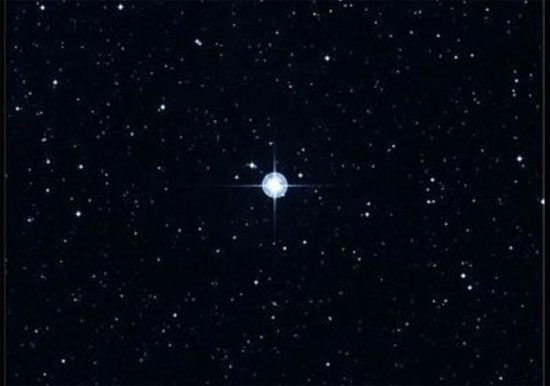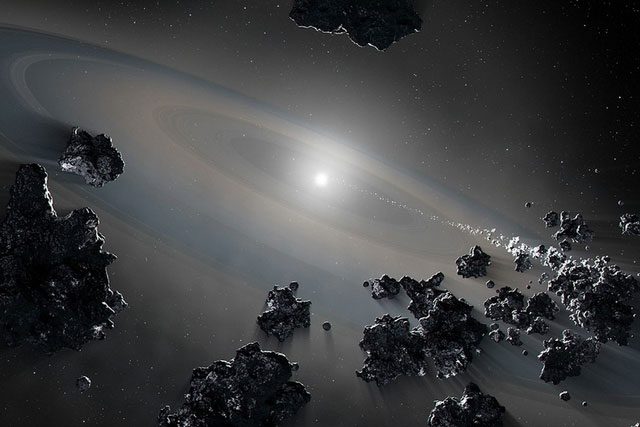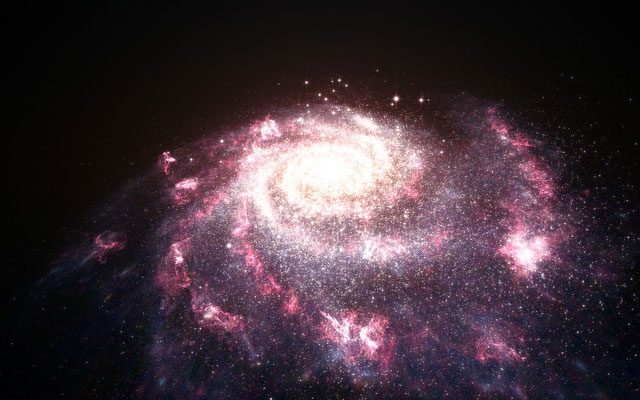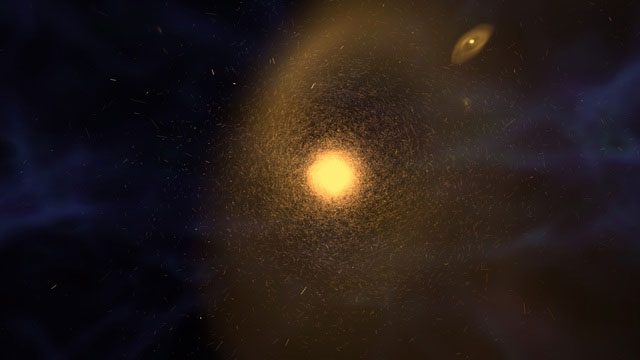In a surprising discovery, the oldest star is actually older than the universe itself.
The origin and evolution of the universe have always been one of humanity’s greatest mysteries. Scientists employ various methods and tools to explore the mysteries of the universe and reconstruct its history. However, sometimes their discoveries contradict their theories and expectations, or even challenge their understanding.
This is why scientists occasionally encounter some perplexing facts when observing the sky. One of the most astonishing truths is that scientists have discovered a star older than the universe itself.
This star is named HD 140283, also known as Methuselah star, which is well-known among astronomers on Earth.
They have been aware of its existence for over 100 years, after it shot across the sky at lightning speed, approximately 1.3 million km/h.
Every 1,500 years, it appears in a flash, creating the legend of the Methuselah star, as reported in the journal Astrophysical Journal Letters.
However, according to a recent report, the star HD 140283, located about 190.1 light-years away from Earth, turns out to be around 14.5 billion years old.

The Methuselah star has surprised astronomers with its true age – (Photo: Caltech)
The anomaly here is that the universe itself is only about 13.8 billion years old, which has left many scientists baffled.
This strange discrepancy is largely due to miscalculations in the initial assessments.
Using the Hubble Space Telescope, astronomers could estimate the age of this star to be around 14.5 billion years, plus or minus 800 million years.
This margin of error indicates that the celestial body might have formed shortly after the Big Bang event.
Previous estimates were even more off, with the age of HD 140283 being calculated at around 16 billion years, over 2 billion years older than the universe itself.
Could this star have been born outside the universe? Or have we underestimated the age of the universe? This question has left scientists puzzled and debating as they try to find a reasonable explanation for this seemingly impossible contradiction.
To answer this question, we first need to understand how the age of the universe is determined. Currently, the widely accepted theory on the origin of the universe is the “Big Bang Theory,” which posits that the universe began from a very small, high-density, high-temperature point and, after a violent explosion, expanded in all directions to form the universe we see today.
According to this theory, scientists can calculate the age of the universe by measuring its expansion rate. The expansion rate of the universe, also known as the Hubble constant, is a figure describing how many kilometers per second the universe expands per megaparsec. Scientists measure the Hubble constant by observing various celestial bodies in the universe, such as supernovae, galaxies, galaxy clusters, and so on.
They can then divide the Hubble constant by the acceleration of the universe to obtain the age of the universe. According to the latest measurements in 2013, the Hubble constant is approximately 67.4, and the acceleration of the universe is about 0.7, which gives the age of the universe as approximately 13.82 billion years.

The expansion rate of the universe is a number describing how many kilometers per second the universe expands per megaparsec. (Illustrative image).
This result seems very accurate, but in reality, there is a significant margin of error. Different observational methods and data can lead to different Hubble constants, affecting the calculation of the universe’s age. For example, in 2019, some scientists used the Hubble Space Telescope to observe some variable stars in the universe and obtained a larger Hubble constant of about 73.4, reducing the age of the universe to about 12.74 billion years.
This discrepancy exceeds the margin of error, leaving scientists confused about which result is more reliable. Compared to the age of the universe, the age of stars seems easier to determine as their lifespans are relatively stable and predictable. Scientists can determine the type, evolutionary stage, and age of stars by observing their spectra, brightness, mass, temperature, and other characteristics.
In general, the more massive a star is, the shorter its lifespan, as it consumes its nuclear fuel more quickly and ultimately explodes as a supernova or collapses into a neutron star or black hole. Conversely, smaller stars live longer because their nuclear fuel burns more slowly, eventually becoming white or brown dwarfs. Based on this principle, scientists can estimate the upper age limits of different types of stars.
For instance, the Sun is an average-mass star with an upper age limit of about 10 billion years. It has existed for about 4.65 billion years and has approximately 5.35 billion years left to exist. The upper age limit for the heaviest stars, such as blue giants, is only a few million years, while the upper age limit for the smallest stars, like red dwarfs, could extend to trillions of years, even surpassing the age limit of the universe itself.
So, what type of star is “Methuselah”? How is its age determined? “Methuselah” is a metal-poor giant star, with a mass about 0.8 times that of the Sun, a brightness of about 0.6 times that of the Sun, and a temperature of about 5600 Kelvin, slightly cooler than the Sun.

Methuselah is a metal-poor giant star. (Illustrative image).
By measuring its spectrum and distance, scientists have estimated its age to be around 16 billion years. This result is based on the assumption that “Methuselah” is a second-generation star, meaning it is composed of hydrogen and helium left over from the death of a first-generation star, which generated primordial matter from the Big Bang, devoid of any metallic elements.
Thus, “Methuselah” has an extremely low metallicity, only 250 times that of the Sun, which is why it is considered a very old star. The answer to this question is not merely stating that “Methuselah” is an older star than the universe but also involves considering the errors and uncertainties in measurements.
Firstly, we need to understand that measuring the age of the universe or the age of stars is not an easy task; it all relies on certain assumptions and models, which may not be entirely accurate or applicable.
Secondly, we need to recognize that measurement results have a certain margin of error, meaning the actual values can vary within a range rather than being fixed numbers. Therefore, when we say that Methuselah is older than the universe, we are actually stating that its estimate is greater than that of the universe. However, this does not necessarily mean that its true age must be greater than that of the universe. So why does this happen? Why is the estimated value of “Methuselah” greater than that of the universe?

Methuselah is a very special star. (Illustrative image).
There could be several reasons for this:
Firstly, the estimate of the age of the universe may be underestimated. This could be due to our measurements of the expansion and acceleration of the universe being inaccurate, or our theories about the origin and evolution of the universe may be flawed.
Secondly, the estimated value for Methuselah may be overestimated. This could be due to inaccuracies in our measurements of the spectrum and distance of the Methuselah star, or our theories regarding its type and evolution may still have some errors. Finally, estimates for both the universe and Methuselah could be incorrect. This could stem from incomplete measurements and theories about the universe and stars, or a misunderstanding of the nature and relationship between the universe and stars.
In Summary, Methuselah is a very special star, with its mysterious age allowing us to think and explore more about the origins and evolution of the universe. It also reminds us that the mysteries of the universe go far beyond our imagination. There is still much that we do not know and are uncertain about, requiring continuous observation and verification before we can gradually move closer to the truth.


















































